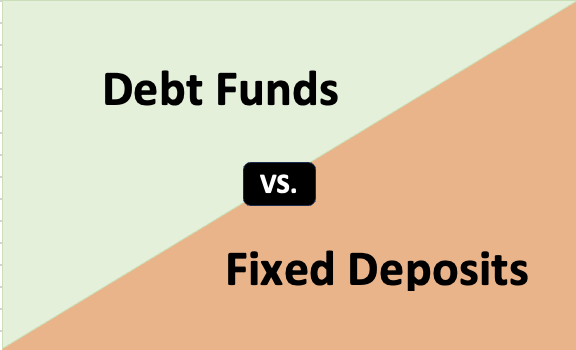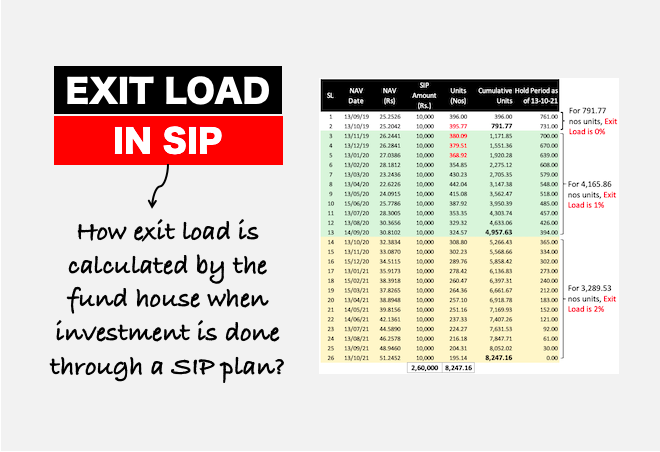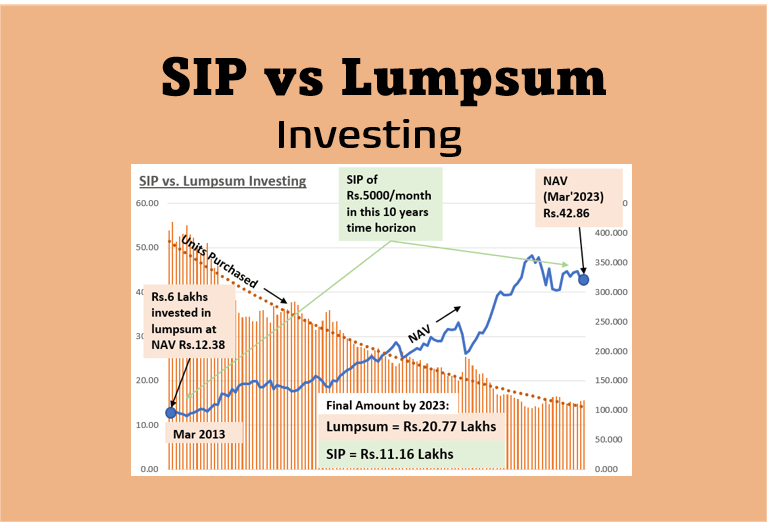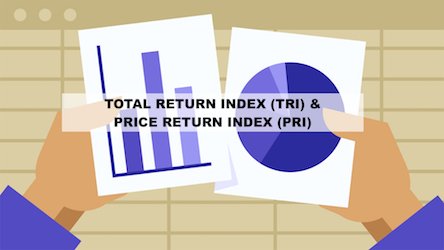In today’s financial landscape, choosing the right investment for your hard-earned money is a crucial decision. While traditional bank fixed deposits have long been a favorite, debt funds are emerging as a strong contender. In this article, we will explore why debt funds are gaining popularity and why they may score over bank fixed deposits.
Understanding Debt Funds and Bank Fixed Deposits
Let’s begin by understanding the basics. Debt funds are investment vehicles that primarily channel your money into bonds issued by government and private companies. In contrast, bank fixed deposits are well-known for their simplicity, offering a fixed interest rate for a specific period.
People are more comfortable with putting their money to work in their bank’s fixed deposits. But if we explore a little bit more, we’ll find that debt funds are better investment instruments as compared to fixed deposits of banks.
Let’s explore the benefits of debt funds over fixed deposits.

#1. Price Appreciation
One of the standout features of debt funds is their potential for capital appreciation. When the Reserve Bank of India (RBI) reduces interest rates, debt funds can yield additional gains over and above the yield to maturity (YTM). For instance, if a mutual fund scheme has a modified duration of 4 years and interest rates fall by 1%, the portfolio could generate an extra 4% in gains (1% * 4 years).
- When interest rates fall, the value of existing bonds in a mutual fund goes up. This happens because the fixed interest they pay becomes more attractive compared to new bonds issued at lower rates.
- Modified duration in debt funds is a measure that tells us how sensitive a bond or a debt investment is to changes in interest rates. It’s like a way of predicting how much the bond’s value will go up or down when interest rates change. If a bond has a modified duration of 4 years, it means its value will go up by around 4% if interest rates drop by 1%, and it will go down by 4% if interest rates rise by 1%. It helps investors understand the risks and potential gains in debt investments.
#2. Tax Benefits and Loss Set Off
Debt funds offer tax advantages. Tax is payable at the time of redemption, regardless of the amount of interest accrued. Moreover, you can use capital gains from debt funds to offset capital losses in equity stocks or equity mutual funds, in accordance with relevant tax provisions.
Imagine you have two types of investments: debt funds and stocks. Let’s say you made a profit, or capital gain, of Rs. 10,000 in your debt fund. At the same time, you suffered a loss, or capital loss, of Rs. 7,000 in your stock investment.
Now, with the mechanism mentioned, you can use the Rs. 10,000 capital gain from your debt fund to offset the Rs. 7,000 capital loss in your stock investment for tax purposes. This can reduce the overall amount you need to pay taxes on, helping you save money when you file your taxes.
It’s a way the tax rules allow you to balance gains and losses across different types of investments.
#3. Systematic Withdrawal Plan (SWP)
Debt funds provide flexibility through Systematic Withdrawal Plans (SWP), allowing you to withdraw a fixed amount at regular intervals. This feature provides a way to generate regular income, which is not typically available with bank fixed deposits.
Let’s consider two scenarios:
- Scenario 1 – Bank Fixed Deposit: You invest Rs. 1,00,000 in a bank fixed deposit at an annual interest rate of 5%. With a fixed deposit, your money is locked for a specific term, say, 1 year. At the end of the year, you’ll receive Rs. 1,05,000, including your interest. In Bank FDs, the best we can get is accrued interest withdrawals, not the principal.
- Scenario 2 – Debt Fund with SWP: You invest the same Rs. 1,00,000 in a debt fund. With the Systematic Withdrawal Plan (SWP), you set up regular withdrawals, say, Rs. 5,000 per month. Your investment continues to grow, and you receive monthly payments of Rs. 5,000. Your capital remains invested, allowing you to enjoy regular income, which isn’t a feature of a bank fixed deposit.
This flexibility generates a steady stream of income, while, our money continues to grow. This is what sets debt funds with SWP apart from traditional bank fixed deposits.
#4. Interest Rate Risk Management
Debt funds also enable a strategic approach to manage interest rate risk. By selecting appropriate debt strategies, investors can shield their portfolios from the impacts of fluctuating interest rates. For example, target maturity funds are generally less prone to interest rate risks.
Think of interest rate risk as how changes in interest rates can affect your investments. Imagine you have two types of debt funds: regular debt funds and target maturity funds.
- Regular Debt Fund: This fund doesn’t have a fixed maturity date. So, if interest rates rise, the value of its investments may go down, and if they fall, the value goes up.
- Target Maturity Fund: This fund has a set maturity date, like 5 years. If you hold it until that date, you get your money back with interest. Since it’s not constantly buying new bonds, it’s less affected by changing interest rates.
So, by choosing the right type of debt fund, one can manage and reduce the impact of interest rate changes on our investments. This strategy helps shield your money from the ups and downs of interest rates.
Risks and Considerations
While debt funds offer several advantages as explained above, it’s important to acknowledge the associated risks. Debt funds are not entirely risk-free, as they can be subject to credit risk and market volatility. To make informed decisions, it’s essential to choose the right debt fund and diversify your investments.
Debt funds are like a double-edged sword, offering benefits and risks. On the plus side, they can bring in good returns and flexibility. However, on the downside, they are not entirely safe. Here’s why:
- Credit Risk: Debt funds invest in bonds, and if the issuer (the one who issued the bond) faces financial trouble, the fund’s value can drop.
- Market Volatility: Just like your favorite cricket game can have ups and downs, so can debt funds. Economic changes and interest rate shifts can impact how much your fund is worth.
So, here’s the deal: To make smart choices, you’ve got to pick the right debt fund for your goals and not put all your eggs in one basket. Diversify, and spread your money around different kinds of investments to lower risks and keep your financial game strong.
Conclusion
While bank fixed deposits have been a trusted choice for risk-averse investors, debt funds are presenting a compelling alternative. Their potential for capital appreciation, tax benefits, SWP options, and interest rate risk management are appealing features. However, it’s crucial to weigh these benefits against the associated risks and carefully consider your investment goals before making a choice.
In today’s dynamic financial environment, understanding your investment options and staying informed about the latest developments can help you make the best decisions for your financial future. Debt funds have a lot to offer, and they might just score over bank fixed deposits for those seeking more flexibility and potential returns.
So, the next time you contemplate where to park your savings, consider exploring the world of debt funds. They may provide the investment solution you’ve been searching for.
You can use the Stock Engine’s Mutual Fund Screener to find quality debt funds.
Have a happy investing.
Suggested Reading:





